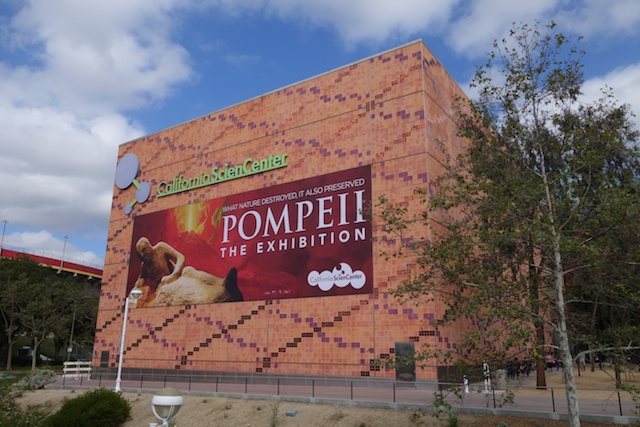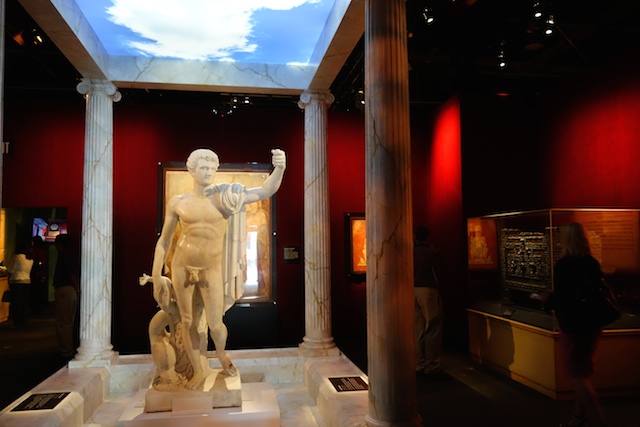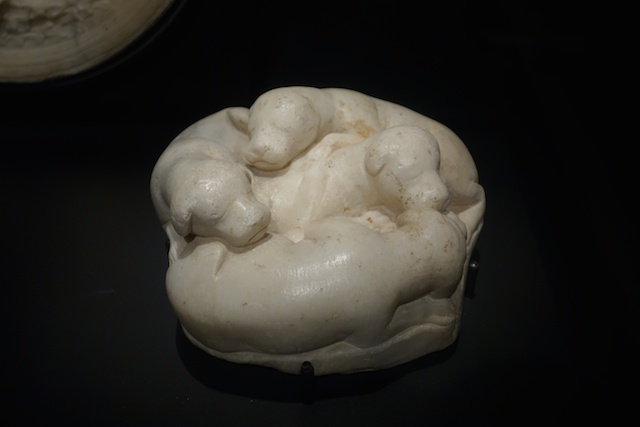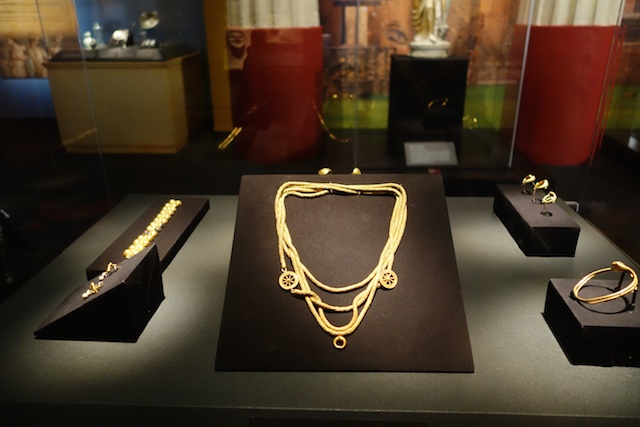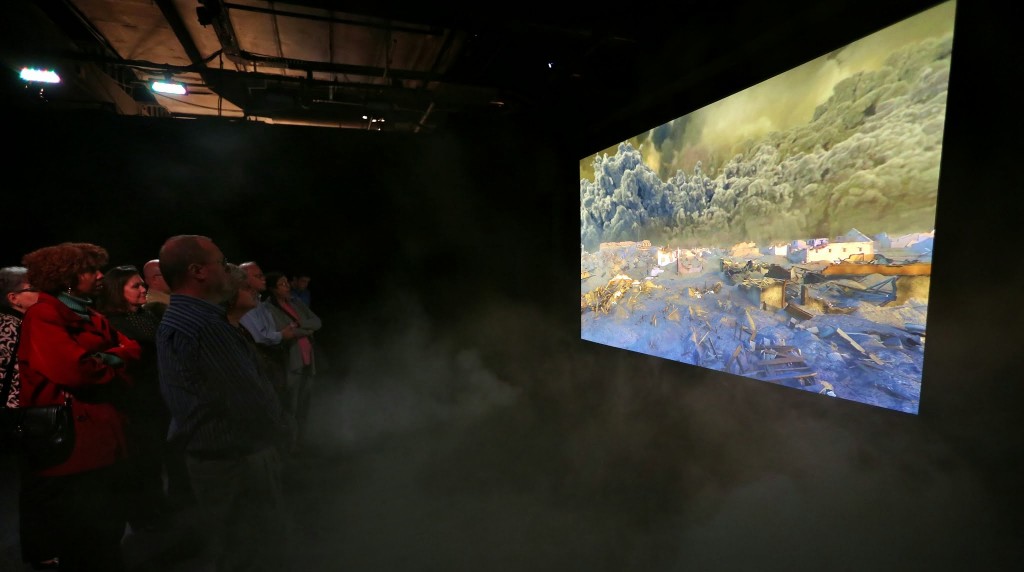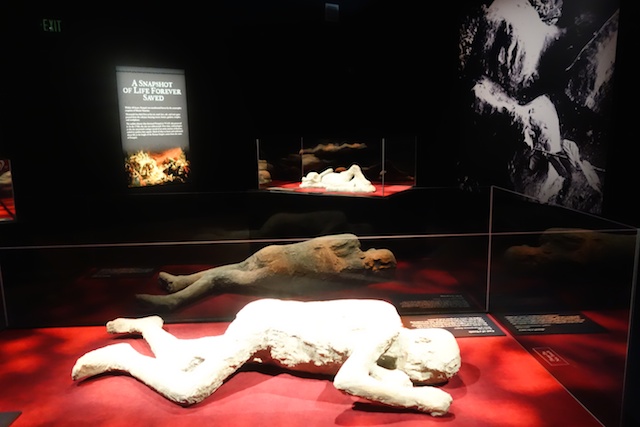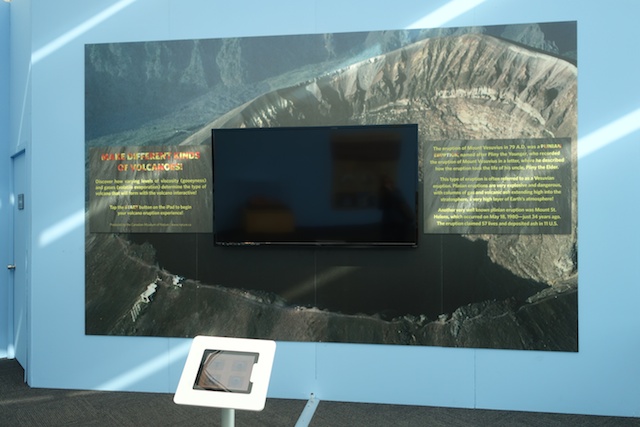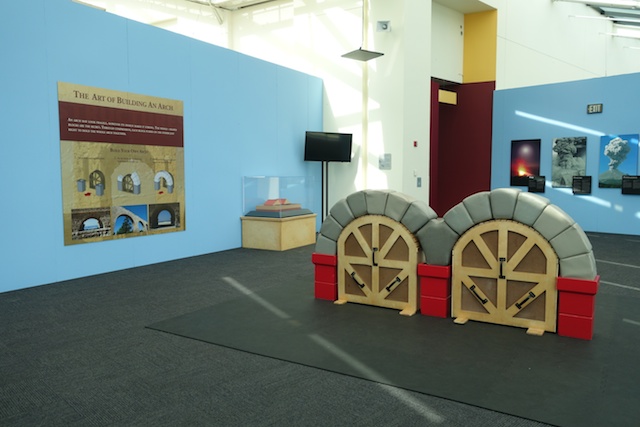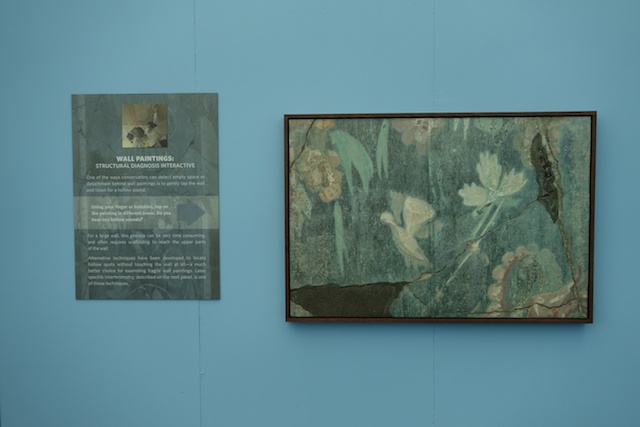What do the Pompeii show and the Getty Villa have in common? Mt. Vesuvius, of course!
The story of Pompeii sets our collective imagination alight on two levels: we envision living at the height of Rome’s flourishing culture and, simultaneously, we shudder at the thoughts of that world being destroyed in an instant. One is a beautiful image and the other horrific, and the newly opened show at the California Science Center — Pompeii: The Exhibition — manages to capture both the elegance of Pompeii and and the savagery wrought by Mt. Vesuvius. With 150 artifacts on loan from Italy, a new IMAX movie called Forces of Nature, and a focus on examining the science behind the disaster, this is a show for everyone to explore over the summer. Pompeii is an intense subject, and the Science Center’s new exhibit tackles the topic head-on. Take some time to consider who in your family it is right for.
Be sure to get your Timed Entry tickets now by clicking here.
The first few rooms in the exhibition describe the elegant life of the Pompeiians through the arrangement of incredible artifacts that archeologists have recovered from the ruins — coins, jewelry, frescoes and furniture. Ashes ruined the city, but ironically served to preserve selected treasures in a volcanic time capsule. These items are on loan from the Naples National Archeological Museum in Italy and will be display at the Science Center until January 4, 2015.
The first few rooms of the exhibition show off gorgeous jewelry and statuary, and we quickly earn about daily life in the courtyard homes favored by the Pomeiians. Romans led a life that kids can readily relate to — statues demonstrate an affection for animals (love those puppies), there’s a penchant for elegant jewelry, and an ongoing affection for luminous statuary and gorgeous frescoes.
We liked earning that food stalls were set up in the city streets and the citizens partook of both breakfast and lunch in the street, saving up for a big, delicious meal that lasted for hours at night. Because the city was on a popular trade route, fresh produce was a normal part of Roman life, and watered down wine was drunk all day long. Other than the wine, (!) it’s a nice way to set up for the soon-to arrive long summer evenings – without homework, families can be inspired to spend a little bit more time around the table at dinner!
RED FLAG: The exhibit has a carefully sequestered room that shows what a Roman brothel would have looked like, and this room contains artifacts that are not suitable for kids.
Just duck around the brothel to the room that kids will clamor for the most: a small CGI theater that traces the progress of life on that fateful day – August 24, 79AD. The floor shakes as the volcano wakes up, a wind blows on your face and smoke sizzles up from the floor in a heart-wrenching two minute snapshot of the speed of the natural disaster. Even with this graphic recreation, it’s difficult to imagine the totality of the destruction.
Then… the screen rises up and everyone is emptied into an eerie exhibition room where several body casts are on display; these are plaster casts made from the hollows left in the ash that hardened around the now disintegrated bodies of Pompeiians. It’s a stunning way to show the swiftness of the peril that befell anyone in the volcano’s path. You can assure your children that these are not actual bodies, but representations of people who perished. A note: we’ve never seen anything like this before, and it is emotional. Needless to say, it will take some explaining! If your child is sensitive, this might not be an ideal exhibit for your family because it cannot possibly sugarcoat the story of the volcano’s utter devastation of the city.
Then, visitors come out into the light to a room with three projects for families — a structure where kids can build an arch, fiddle with an interactive “volcano-maker,” and learn about the excavation and preservation of frescoes.
Few books or movies have really captured the mystery of Pompeii – although the gift store does sell several books of mythology. There was a film released earlier this year called Pompeii, but by many accounts it was quite violent and not really great for families. (It actually inspired one reviewer to ask “Is it fair to root for the volcano!?” ). True aficionados might want to try the film — Common Sense Media recommends it for kids over 15 because of the carnage both in gladiator scenes and the volcano itself.
A better film idea might be to watch the Academy Award winner Gladiator, or Troy, both of which are also for older kids but depict life in those times in wonderful detail.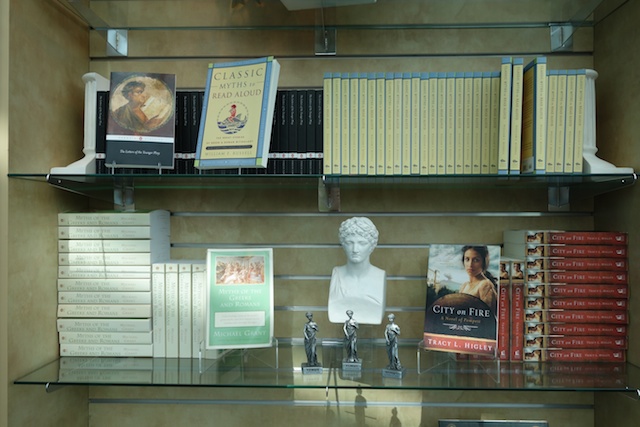
A wonderful local connection to this exhibit would be to visit The Getty Villa. The building itself is a spectacular recreation of a villa from Herculaneum, which is a neighboring town to Pompeii, and which was also buried by Vesuvius.

